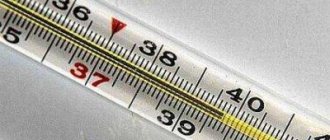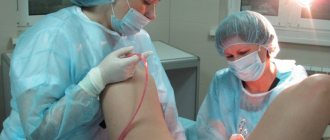The reproductive system occupies a very important place in the female body. Its normal functioning affects sexual activity and general well-being. A special role in this is played by the stable arrival of menstruation. If any problems occur in a woman’s body, doctors try in every possible way to avoid surgical intervention by prescribing drug therapy. But it happens that removal of the uterus is the only way to preserve not only health, but also life.
Whether or not you get your period after hysterectomy depends on the extent of the intervention. And you should know this.
Indications for removal
Myomas are considered the main reason for removal of the female reproductive organ. The grounds for excision are:
- big sizes;
- great amount;
- the likelihood of transformation of benign neoplasms into oncology;
- rapid growth.
Surgical intervention is prescribed if it is not possible to treat fibroids with medication or cut them out individually.
In addition, there are other reasons for removing the main reproductive organ of a woman:
- cancer;
- serious mechanical damage;
- foci of endometriosis;
- prolapse or prolapse of the uterus.
In each individual situation, the doctor chooses the type of intervention and the required volume of excision of the reproductive organ. This depends on many factors:
- degree of development of the disease;
- accompanying ailments;
- general condition of the woman.
Hysterectomy
It happens that as a result of such an operation, the female reproductive organ is not completely removed. Depending on the characteristics of the disease, the cervix may be left.
If a woman still has ovaries, then under the influence of the hormones produced by these endocrine glands, the endometrium will form in the remaining area of the uterus. Accordingly, menstruation will also occur, but in a much smaller volume.
If the reproductive organ has been completely removed, then the mucous membrane has no room to grow, which means that menstruation stops.
When the appendages or at least one ovary are preserved, hormones are produced. If at least part of the uterus remains, then the endometrium grows on it and is rejected, and accordingly, menstruation begins.
After hysterectomy of the entire reproductive organ, there is no regulation. If bleeding appears after a few months, this is a signal of pathology.
What causes menstruation when the uterus is removed?
The persistence of menstruation after hysterectomy is due to several reasons. For fibroids or non-invasive malignant tumors, the entire organ may be removed or the cervix may be left behind. This decision is due to the characteristics of the disease that caused such measures.
If the cervix has been preserved, then under the influence of the activity of the ovaries the endometrium continues to form in this small area. As a result, a woman who has undergone surgery to remove this organ still gets her period.
Or rather, she may have slight spotting during menstruation. In addition, if the ovaries have not been removed, symptoms of premenstrual syndrome will also appear. This is due to the production of hormones in the ovaries.
If the entire uterus and cervix are removed, you should not have periods. If they persist, this may be a sign of a developing genital disease. In this case, it is advisable to consult a doctor and undergo an examination.
Sometimes women mistake the start of bleeding for menstruation, which can be very dangerous. You should be wary if:
The last sign indicates the development of infection in the genital tract, and the rest may be symptoms of bleeding.
For women, removal of the uterus is most often a serious blow. Many people believe that after such an operation they become inferior. The main reason for this opinion is precisely that after removal, menstruation stops. This is a sign of aging for women, so patients try to avoid such operations. Keeping your periods on schedule can help a woman feel more youthful.
The main thing in this case is to make sure that the body functions as it should, and the presence of monthly discharge is not a sign of pathology.
Some women, knowing that after removal of the uterus there should be no monthly discharge, begin to worry. There is no cause for alarm, although the presence of too much discharge can be dangerous. If this phenomenon is accompanied by other unfavorable symptoms, for example, attacks of pain, you should consult a doctor.
There are representatives of the fair sex who get upset if they are still menstruating. Knowing that menstruation should stop after the organ is removed, they are unhappy with its continuation.
Removing the remaining part of the organ that causes this phenomenon will help get rid of this undesirable phenomenon. If you remove the cervix, menstruation will stop. But in some cases it is not advisable to do this for medical reasons.
If menstruation continues after a hysterectomy, there will be no consequences. In this case, treatment is not required, only medical supervision is sufficient. When the supply of eggs reaches the end, menopause will occur, which will lead to the complete cessation of menstruation. After menopause has occurred, the appearance of any spotting is a sign of abnormalities and requires medical attention.
Uterus removal
Uterine amputation is a rather complex process. And after the operation, the woman spends mental and physical energy to return to normal. Depending on the state of health and the affected area, the following is cut out during surgery:
- ovaries and fallopian tubes;
- one ovary and tube;
- cervix.
In this case, either abdominal surgery is performed, or the doctor gets to the pathology through the vagina. The consequences of manipulation and the rehabilitation period will also depend on the chosen method.
Abdominal surgery
To perform this procedure, the doctor makes an incision in the abdomen. The operation takes from 40 minutes to 2 hours. The disadvantages of this type of intervention include:
- a large scar that will remain on the woman’s body;
- high level of trauma and difficult postoperative period.
Amputation or extirpation of the uterus is performed by making an incision in the abdominal wall.
Amputation is the removal of the female reproductive organ, in which both the cervix and fallopian tubes are preserved, and the ovaries are also left. And extirpation involves the removal of the entire reproductive system. Thus, after amputation of the uterus, menstruation will continue to occur, but after extirpation, it will not.
After any type of abdominal surgery, small fragments of tissue and minor bleeding may come out. You should sound the alarm and immediately consult a doctor if:
- the blood flows without stopping for a month or two;
- large clots are separated;
- bleeding is accompanied by pain;
- The discharge is bright scarlet in color.
Through the vagina
In this operation, the mucous membrane in the upper part of the vagina is excised. This type of hysterectomy has its advantages and disadvantages. The advantages include:
- lower risk of injury and complications;
- beautiful cosmetic effect;
- short rehabilitation period and faster recovery after manipulation.
The disadvantages include:
- difficulty visually examining the abdominal cavity;
- increased risk of hurting the bladder or rectum;
- difficulties encountered in stopping bleeding.
In our country, this type of manipulation is carried out in cases of prolapse, prolapse of the uterus or sex reassignment operations. Therefore, laparoscopy is increasingly used to remove organs of the female reproductive system.
Women whose ovaries were preserved during surgery experience rehabilitation more easily. This occurs due to the fact that these endocrine glands continue to produce hormones, and the balance of biologically active substances in the body is not disturbed.
Main types of operations
The operation can be performed under general endotracheal anesthesia, spinal anesthesia or combined anesthesia.
Depending on the volume of tissue removed, operations are divided into:
- Subtotal removal (supravaginal amputation of the uterus). The resection boundary for this operation is the internal os. The cervix and vagina are preserved. This is the most gentle and less traumatic removal for a woman.
- Total removal (extirpation of the uterus along with the cervix and part of the vagina). Extirpation can be carried out both with the appendages and with their preservation.
- Extended extirpation (radical removal) – removal of the uterus with the cervix, appendages, surrounding tissue and lymph nodes. The main indication for such an operation is malignant neoplasms of the uterine body, endometrium, cervix and ovaries.
Based on the type of access and method of execution, surgical removal of the uterus is divided into:
1. Abdominal surgeries. They are made through an incision in the anterior abdominal wall (straight or transverse). The ligaments connecting the uterus with other organs and with the sacrum are crossed, and the blood vessels are ligated. The uterus is brought out into the wound, clamps are applied along the boundaries of the removal, the organ is cut off and removed through the surgical incision.
Supravaginal amputation requires less time to mobilize the organs being removed. A total hysterectomy requires careful separation of the cervix and vagina from the bladder.
Disadvantages of this operation:
- A scar remains on the abdomen.
- Greater tissue trauma, greater risk of bleeding and infection.
- Long postoperative period.
- Pain syndrome.
- Longer rehabilitation is required.
open surgery (direct/transverse incision of the abdominal wall)
However, such operations also have their advantages:
- This surgical approach allows for a thorough inspection of the tissue surrounding the uterus, lymph nodes and neighboring organs.
- Abdominal surgery is faster, which shortens the period of anesthesia. The duration of laparotomy hysterectomy is from 40 minutes to 1.5 hours.
- It does not require expensive equipment, can be performed in any department of operative gynecology and is free of charge.
2. Laparoscopic removal of the uterus. Through several punctures, a laparoscope and special instruments are inserted into the abdominal cavity. Under visual control of the laparoscope, all uterine ligaments and vascular bundles are intersected, the uterus is cut off and removed through the vagina using special forceps. The operation lasts 2.5 – 3 hours.
3. Hysteroscopic removal of the uterus . All manipulations are performed through a circular incision in the vagina under the control of a hysteroscope. The operation is complex, requiring high skill of the doctor and expensive equipment. Duration 2-2.5 hours.
Endoscopic removal of the uterus is becoming quite widespread. Currently, this is the most commonly performed surgery for fibroids. The main advantages of such operations:
- Low tissue trauma due to the absence of large incisions.
- Short postoperative period. After a few hours you can get up, discharge from the hospital is possible in a few days.
- Less risk of bleeding and suppuration.
- Less severe pain syndrome.
- No postoperative scars on the abdomen.
However, endoscopic operations are not always possible. They are not shown:
- For large tumor sizes.
- For malignant ovarian tumors, when a thorough revision of the pelvis is necessary.
- For emergency operations.
- In the presence of adhesive disease of the abdominal cavity.
- After a caesarean section.
Menstruation after surgery
Regular menstruation after removal of the uterus is possible only if it is not completely excised, but some part remains, for example the cervix. Then the endometrium will grow on it, which is rejected every month, provoking cyclic discharge. But for this it is necessary to leave the ovaries, since menstruation occurs under the influence of the hormones that they synthesize. Also, due to the presence of these endocrine glands in the body, it ages more slowly and better resists environmental factors.
After excision of the ovaries, hormonal changes and surgical menopause with all its manifestations begin. Thus, in order for menstruation to continue, the body must have ovaries and at least part of the uterus. If all this has been removed, and 2 months after the manipulation, prolonged bleeding is still observed, then this is a sign of pathology. In this case, you need to consult a doctor.
To understand when to be wary, we recommend reading more information about the normal color of menstrual blood.
Before and after surgery, women need to take antibiotics to avoid infection. They are not prescribed only in case of individual intolerance to this type of medication.
No critical days
After a hysterectomy, it is often very difficult for women to come to terms with it emotionally. When realizing the absence of a reproductive organ, a representative of the fairer sex feels worthless in terms of realizing the main female goal. To a greater extent, this is reminded by the absence of menstruation and the scars left after the operation.
Is it possible to have surgery during menstruation?
It is traditionally believed that performing surgical interventions on these days is undesirable. But, if necessary, when minutes count and any delay can lead to death, not a single doctor will refuse help even in the presence of menstruation.
European doctors believe, on the contrary, that it is better to perform surgery during menstruation. They explain this by the fact that on critical days the body’s immune reactions and its general reactivity increase, which helps faster healing of wounds and reduces rehabilitation time in the postoperative period. And hormonal and hematopoietic changes do not lead to serious complications.
What happens on the days of menstruation and why are doctors reluctant to prescribe operations on these days? And why is it advisable to have surgery after the end of menstruation?
Changes in the hematopoietic system, in the form of a decrease in hemoglobin content and an increase in blood clotting time, increase the likelihood of complications, and as a result, the recovery period after surgery increases. Therefore, doctors shift surgical intervention to the period after menstruation. The ideal time is considered to be the period from the seventh to the tenth day of the menstrual cycle. But some women, despite the likelihood of developing complications, hide the fact that their period is approaching. What does such a rash decision lead to?
Treatment and consequences
For the first 2 months, women who have undergone hysterectomy are not advised to be sexually active. This is necessary so as not to injure or infect the sutures left after surgery.
Also, for up to 6 months, you should avoid lifting weights, active physical exercise, taking hot baths, and under no circumstances should you be nervous.
If the cervix and appendages remain, the normal menstrual cycle will be restored approximately 4–6 months after the manipulations. Those who have had their ovaries removed are prescribed hormonal medications to alleviate the symptoms of early menopause.
When diseases of the reproductive system pose a serious threat to the patient, surgical intervention cannot be avoided. Many people are interested in whether menstruation occurs after hysterectomy. If the ovaries are preserved, the hormonal status is not disturbed, in this case there is no need to worry about the menstrual cycle. Hysterectomy is considered a serious manipulation, after which various complications are possible. This operation is most often performed for multiple uterine fibroids.
Can I get my period after my hysterectomy?
Removal of the uterus is resorted to in critical cases. The most common reasons:
- Neoplasms of a malignant nature.
- Prolapse of the uterus.
- Endometriosis in severe form.
- Ectopic pregnancy.
- Large fibroids.
- Numerous localizations of fibroids.
- Heavy bleeding.
- Damage to the uterus of a mechanical type.
When the uterus is removed, a woman's body undergoes serious changes. Hormonal levels are disrupted. Menstruation stops because the endometrium stops shedding. Absence of menstruation is normal in this case.
After removal of the cervix, menstruation can proceed as usual, but their quantity becomes scarce. This is due to the fact that the endometrium is rejected in small quantities. Measures to remove the cervix in some cases are aggravated by possible complications. One of the most harmless is pain during sexual intercourse, which does not go away for a long time. In severe cases, additional manipulation may be required to lift the vaginal walls.
Removal of polyps is carried out on the 3rd day after menstruation in several ways:
- Cryodestruction.
- Laser removal.
- Hysteroscopy.
- Scraping.
After removal of uterine polyps, menstruation continues as usual. But immediately after surgery, menstruation may begin with a delay. First of all, it depends on how the procedure was carried out. If curettage has taken place, it causes a serious blow to the body. In this case, menstruation may not begin until 40 days after the procedure. It can be either too abundant or scanty. Both cases are normal if there are no other complications.
How to come to terms with the absence of critical days
With complex surgery, in most cases, menstruation stops after removal of the uterus. This is a serious stress for a woman, not only physiologically, but also psychologically. It is very important to promptly begin therapy aimed at restoring the psycho-emotional state.
Just a few years ago, hysterectomy was a common operation that doctors prescribed for many gynecological diseases. Nowadays, hysterectomy is performed exclusively in severe cases requiring removal of the uterus. This manipulation brings many complications to the patient, in addition to the absence of the menstrual cycle.
Rehabilitation after removal of the uterus requires constant monitoring by a doctor and compliance with all recommendations.
Only in this case is it possible to avoid complications. The recovery period is divided into two stages - early and late. In the normal course of rehabilitation, the early stage takes no more than 12 days. This stage takes place in a hospital setting. On average, the sutures are removed on the 12th day after the procedure. If the operation was performed using laparoscopy, this reduces the time of the early stage of rehabilitation to 4 days.
During this period, the main tasks are:
- Stop the bleeding.
- Avoid the possibility of infection.
- Eliminate pain syndrome.
Risks and complications after abdominal surgeries performed during menstruation
Negative consequences are very real, so you need to be prepared for them just in case. Moreover, abdominal surgery is classified as complex due to extensive (compared to laparoscopy) excision and a longer rehabilitation period. Therefore, you should think carefully before rushing to have surgery during this period, especially if there is no serious threat to health or life.
So, the main possible complications:
- due to reduced coagulability, sudden bleeding may occur, and this is fraught with blood loss or subsequent hematomas at the site of the intervention;
- rough postoperative scars, but not due to the fault of the surgeon, but due to the peculiarities of collagen metabolism. Scars can be polished off later, and only then will they become less noticeable;
- inflammatory processes due to increased blood supply in the operated area;
- the appearance of pigment spots due to hemorrhage in the operated area. Within a few months, the pigmentation disappears.
Based on these probable consequences, surgical intervention can be planned only for the time before or after menstruation, ideally on days 5-10 of the cycle. This will not only reduce the risk of bad consequences of the operation, but will also give the woman time to rehabilitate and restore her ability to care for herself, and to fully maintain hygiene during her next period.
If before the operation, due to strong feelings, a woman’s body malfunctions and menstruation resumes, then almost any surgeon will prefer to postpone the intervention to a later date, thereby avoiding possible postoperative complications in the patient.
What to do if your period comes after removal
It is impossible to give a universal answer for every woman whether she gets her period after a hysterectomy. In some cases, after surgery, menstruation occurs as usual.
In cases where the uterus has been removed and the menstrual cycle has not disappeared, first of all, it is necessary to figure out whether this is the norm. With simple operations that involve preserving the ovaries, menstruation does not disappear, and there should be no disturbances in this case. A delay is allowed only in the immediate postoperative period, after which the cycle is completely restored.
Features of physical condition are not identical for all women. For most, hysterectomy goes without complications if the operation was performed correctly and all rehabilitation conditions were met. For some patients, the consequences of hysterectomy are fraught with extremely negative consequences, including severe inflammation and infections. Therapy to eliminate complications must be timely. The reason for this in most cases is the presence of concomitant diseases, as well as non-compliance with doctor’s instructions, neglect of prohibitions and restrictions. The rehabilitation period is important for the further complete restoration of the woman’s body. At this stage, it is possible to avoid the appearance of scars and adhesions with the help of appropriate therapy. To prescribe adequate treatment, the patient must consult a doctor. Gynecological diseases are dangerous for women. Their untimely treatment leads to reproductive dysfunction.
Possible complications after laparoscopy done during menstruation
Unlike abdominal operations, laparoscopy is easier to do; the incisions after it are minimal - only from 0.5 to 1.5 cm. This is due to the fact that all actions are performed only by inserting instruments inside, and extensive opening of cavities is excluded here. This operation is easier to tolerate, and the recovery period after it is much shorter. It is done under general anesthesia mainly on the pelvic and abdominal areas.
With all the advantages, they will most likely refuse to do laparoscopy during menstruation (again, if it is not urgent). It is also contraindicated in the presence of cardiovascular diseases, exhaustion, coma or shock, or bleeding disorders. Hence the consequences:
- disorders of the cardiovascular system;
- the likelihood of developing varicose veins;
- internal bleeding.
It is advisable to do laparoscopy on days 5-7 of the cycle, which can reduce the risk of blood loss due to decreased blood clotting. This will also give time for postoperative microtraumas and wounds to heal before the next period begins, which is then more likely to come on time.
If a woman who has undergone laparoscopy has painful, heavier and longer periods, there is no need to worry, this is normal. After surgery, your cycle may be disrupted and your period may not come for several more weeks. This is also not scary, since any intervention in the body from the outside causes a certain reaction. But if they haven’t been there for about 3 months, you need to see a doctor urgently: there may be complications or hormonal system disorders.
Taking into account the fact that there may be consequences after carrying out surgical measures during critical days, doctors will advise postponing the intervention to a later or earlier date, because there is no point in taking risks if there is no question of life and death.
As for planned procedures, the first who, for obvious reasons, will prohibit operations during critical days are gynecologists. Moreover, such an event is not recommended for these particular specialists even 3 days before the onset of menstruation.
Anesthesiologists will not approve of this either: the pain threshold in women during the period under review decreases, and sensitivity to anesthesia becomes high or, conversely, decreases.
The surgeons themselves, anticipating possible associated problems when intervening during this period, will try to reschedule the planned procedure to another date so that the same bleeding can be avoided. After all, it is these specialists who are primarily responsible not only for the health, but sometimes also for the life of the patient, and possible complications during surgery increase the risk of an unsuccessful outcome.
If a situation arises that it is impossible to do without the help of a surgeon on the road to recovery, you should carefully prepare for this. But be sure to pass all the tests and undergo the appropriate examination prescribed by the doctor - that’s not all. You should discuss the date of the scheduled surgical intervention with a specialist, and if it coincides with critical days, jointly choose the time when it will be possible to perform the operation.
If your period does not come as scheduled due to strong worries, you need to inform the doctor about this to change the date of the operation. In the event of a non-emergency situation, the doctor will decide on what day the event can be scheduled, taking into account the fact that the tests taken are considered valid for 2 weeks.
Relying on “maybe” in matters of one’s own health is at the very least frivolous, and sometimes even dangerous. Therefore, hiding important information about your condition from doctors is often fraught with consequences that cannot always be quickly eliminated.
People who are completely satisfied with their appearance and their reflection in the mirror are extremely rare. If we talk about the face, then the leader in the number of discontent is the nose. For example, the following options required surgical intervention:
We know that the size and shape of the nose are genetically determined and, in most cases, the nose on the face looks quite harmonious. Small deviations in its size or shape: a hump, a thick tip of the nose, a nose that is too long, can cause a person to feel insecure and lead to the development of complexes. Such patients are indicated for aesthetic rhinoplasty.
But there are situations when rhinoplasty is a justifiable necessity. We are talking about patients with respiratory dysfunction; in this case, rhinoplasty has medical indications.
Rhinoplasty is considered a rather complicated operation, especially for the patient, since the recovery process after surgery is quite long and the result can only be assessed after a year. But the result speaks for itself:
Despite its complexity, rhinoplasty is gaining increasing popularity and interest from patients every year.
To explain the essence of rhinoplasty and answer questions of interest, we asked the head of the “Center for Aesthetic Rhinosurgery”, laureate of the National Award “Best Plastic Surgeon in Rhinoplasty” from Tecrussia.ru, Vladislav Semenovich Grigoryants.
— Hello Vladislav Semenovich.
Please tell me how a patient can avoid making a mistake when choosing a surgeon? What should you pay attention to when choosing a specialist?
We mainly look at the work of the surgeon. Photos before and after rhinoplasty speak about the level of the surgeon. Plus patient reviews.
— What is rhinoplasty?
Rhinoplasty is a plastic surgery aimed at changing the shape of the nose: reducing the size, correcting the back and tip of the nose, etc.
Rhinoplasty is, on the one hand, a rather complicated operation, on the other hand, if a surgeon specializes in this and is well versed in this, then for him rhinoplasty is a fairly easy operation.
— At what age can rhinoplasty be done?
Girls can undergo this operation from the age of 14, boys from 16. It is at this age that the formation of the bony skeleton of the nose ends.
— What should be the medical indications for rhinoplasty?
Rhinoplasty, in most cases, is an aesthetic operation. An exception is septoplasty, i.e. correction of the nasal septum. A deviated nasal septum can make nasal breathing difficult; in this case, the indication for surgery is its curvature. There are no other medical indications for rhinoplasty.
In addition, a deviated nasal septum, to one degree or another, is observed in 95% of people, but not everyone experiences breathing problems.
Therefore, when performing rhinoplasty, 95% of the time I perform septoplasty, regardless of whether the patient has breathing problems or not. If I don’t do this, then later, in the postoperative period, the septum will lead the nose away.
— How is a consultation regarding rhinoplasty carried out?
Basically, this is a simulation that allows the patient to understand what can be done in his particular case. And answers to questions: these could be organizational issues or questions regarding the course of the postoperative period.
— Do you do computer modeling of the nose during a consultation?
Yes, definitely. I do it during primary operations.
— What time of year is it better to have rhinoplasty?
There is no seasonality. Rhinoplasty can be done at any time of the year.
— What medications should be avoided before rhinoplasty?
— How best to prepare for rhinoplasty?
No special preparation is needed. The only thing is not to do peelings a month before the operation and pass all the necessary tests.
— What is the essence of the operation?
Change the shape of your nose.
— What type of anesthesia is used during rhinoplasty?
During rhinoplasty, general endotrachial anesthesia is used. People ask a lot about intravenous or mask anesthesia. Regarding mask anesthesia, no, firstly, by putting a mask on the nose, we will not be able to gain access to the nose, and secondly, mask anesthesia has not been used for a long time.
— What types of rhinoplasty exist?
There are two types of rhinoplasty - open and closed rhinoplasty. The choice of rhinoplasty technique is based on the surgeon’s preferences.
I mostly perform all repeated surgeries using the open method. In 99% of cases, I perform primary rhinoplasty using the closed method.
— How long does rhinoplasty last?
Primary rhinoplasty surgery lasts an average of 1.5 hours
— How does the thickness of the skin of the nose affect the outcome of rhinoplasty?
Thin skin gives good contouring and definition of the nose. In patients with thin skin, swelling subsides much faster. With thick skin, swelling lasts a very long time, up to a year or more, plus it is impossible to get a defined nose. Thick skin of the nose will hide all the changes that we will make on the osteochondral skeleton of the nose.
— Is a hospital stay necessary after rhinoplasty?
It is necessary to spend 24 hours in the hospital after the operation.
-How often do you need to come for dressings?
During the first 10 days, the patient comes to me every other day. The nasal splint is kept in place for 10 days, respectively, until the day the nasal splint is removed, dressings occur every other day.
— What does a patient need to know about the rehabilitation process?
Since, basically, rhinoplasty is performed with the bone skeleton affected, an osteotomy is performed, in any case, the rehabilitation period is accompanied by the formation of bruises.
If there are no bruises after rhinoplasty, this indicates that the surgeon did not perform an osteotomy. These are our patients for re-operation.
— How is the rehabilitation period after rhinoplasty?
The operation is easily tolerated. The course of the postoperative period is not severe, the patient can easily take care of himself, without additional help.
— Is the pain severe and pronounced in the postoperative period?
The operation is painless. The head may ache a little, but the nose, as a rule, does not hurt.
Treat the inside of the nose with hydrogen peroxide, and use saline drops or spray to relieve swelling of the nasal mucosa.
-What are the contraindications during the rehabilitation period after rhinoplasty?
You can't play sports. During the period when the patient is in a cast, you should not wash your hair by throwing it back. Alcohol is not advisable as it causes edema.
— Is it possible to drive immediately after rhinoplasty?
It is not advisable to drive immediately after surgery. After anesthesia, there may be some lethargy, so for the first two or three days it is better to have someone come for you.
How long does it take to recover from rhinoplasty?
It takes two weeks for the bruises to go away. After the bruises disappear, the patient can return to his normal lifestyle and go out in public.
— Do stitch marks remain after rhinoplasty?
If it is a closed rhinoplasty, then no marks are visible. After open rhinoplasty, a barely noticeable suture remains on the columella.
— When will it be possible to see the final result of the operation?
The final result after the operation can be seen within a year.
— Is it possible to reduce the tip of the nose without surgery?
No, it is not possible without surgery.
— What are the risks or complications after rhinoplasty?
There are no complications as such. There may be a small hematoma, which is easily treated.
— Is it possible to have rhinoplasty during menstruation?
?
In principle it is possible. I operate during my period, and it does not cause me any difficulties.
— Is it possible to have a nose job while breastfeeding?
Since rhinoplasty is performed under general anesthesia, all drugs used during anesthesia can pass into the milk. This is highly undesirable for a child. Rhinoplasty can be performed one month after the end of lactation.
Patient Questions
Hello. I am planning to have rhinoplasty, I have a deviated septum. How many days of vacation should I take for rehabilitation after surgery?
Need to take 2 weeks. Two weeks will be enough for the bruises to disappear.
Hello! My son is 14 years old and has had a deviated nasal septum since birth. One nostril is not breathing at all. Is it possible to have surgery at this age?
No, only after 16-17 years, since at the age of 14 in boys the bone skeleton of the nose is not yet fully formed.
Hello! I have a very small nose, is it possible to gently enlarge it? What will this operation be called?
Also rhinoplasty, using techniques that are aimed at solving this problem, i.e. nose enlargement
There are many methods. To choose a specific technique, consultation with the patient is necessary. After consultation, examination and the necessary measurements, it becomes clear whether grafts will be necessary, or whether a good result can be achieved by distributing tissues and narrowing the nasal bridge, which allows increasing the projection of the nose
- Hello. Is it dangerous to have rhinoplasty if you have had eye surgery?
No, absolutely.
— Hello, I would like to hear your opinion about non-surgical rhinoplasty?
There is no non-surgical rhinoplasty. It is possible to use fillers to slightly correct changes. It is not possible to reduce or change the shape of the nose without surgery.
- Good afternoon! Is it possible to have rhinoplasty for chronic rhinitis?
Can. But rhinitis will not go away after rhinoplasty.
— Is it possible to make nasal breathing easier during rhinoplasty?
Yes, definitely. After rhinoplasty, in most cases, nasal breathing improves.
Hello, I suffer from rosacea, I have a lot of capillaries on my nose. Does it make sense for me to remove them before rhinoplasty or can this be done later?
Doesn't matter. You can deal with the problem of rosacea both before and after surgery.
Good afternoon I have a neat nose, but there is a small hump. When I smile, my nose seems to peck. What can be done in my case and how much will it cost?
You are recommended for complete rhinoplasty. The cost of such an operation is 230,000 rubles.
— Hello, I’m 40 years old. Is it possible to have rhinoplasty if I am undergoing hormone replacement therapy?
Hormone therapy is not a contraindication for rhinoplasty.
- Good afternoon!
Please explain why secondary rhinoplasty costs more than primary rhinoplasty. If I had rhinoplasty 15 years ago, will the operation now be considered secondary?
Yes, of course, the operation will be considered secondary, since there has already been an intervention in the nasal cavity and it is not known what was done to the nose before that. It is not always possible to understand what you may encounter during a repeat operation. Correcting is always more difficult than doing primary rhinoplasty. Therefore, the price for secondary rhinoplasty is higher.
Hello! 10 days after the operation, my daughter had her head removed from her nose. There was no pain, breathing was not impaired, nothing visually shifted. Could this affect the final result of the operation?
Must watch. Judging by the description, everything is in order, but a personal inspection is needed. Contact your operating surgeon.
— Hello, is it possible to reduce the distance between the nose and upper lip using rhinoplasty?
Can. Here we are talking about the pecking tip of the nose. When the tip of the nose is raised, the distance between the nose and the upper lip visually increases.
— I have a mild form of asthma. Is it possible for me to have rhinoplasty?
In all likelihood yes. But, you need to communicate with an anesthesiologist to understand what risks exist with anesthesia. Permission to operate in the case of asthma is given by the anesthesiologist, and he has the final say. Anesthesia selection will be necessary.
- Hello! I have hepatitis C. Do you perform surgeries for this diagnosis?
For hepatitis yes, for HIV no.
Hello. A year ago I broke my nose bone. I had surgery to correct the bone misalignment. How long before I can have rhinoplasty to change the shape of my nose, from an aesthetic point of view?
In a year.
Hello, I have a slight post-traumatic displacement of the bone and cartilaginous structures of the nose. How much will the correction cost?
Correction will cost 230,000
Good afternoon I am 50 years old. As a result of a work injury, 2 weeks ago, she received a displaced fracture of her nose. The nose has become crooked, the bone seems to be sinking. How long does it take to have rhinoplasty to correct a defect?
I, too, was naturally beautiful, until I got into a serious traffic accident near Moscow, where my nose became deformed.
I couldn’t leave this “miracle”; of course, it was necessary to return the aesthetically beautiful appearance back. I had surgery with Dmitry Radionov, a very good surgeon, he did everything right.
In order to thoroughly prepare for a future surgical intervention and not be refused the operation at the very last moment, you should know whether it is possible to have plastic surgery during menstruation. There is disagreement between plastic surgeons and general surgeons on this issue. Evaluate the arguments of both sides and make your own choice.
conclusions
Gynecological diseases are among the most dangerous for a woman’s body. If you notice any abnormalities, you must immediately contact a medical facility for diagnosis.
With timely treatment of diseases, removal of the uterus may not be necessary. The problem is that not all diseases can be diagnosed in the early stages.
Before performing a hysterectomy, the doctor needs to know about all the possible consequences, the rehabilitation period, and restrictions. Since the operation to remove the uterus is quite complex and serious for any woman, it is necessary to find out all the information from the attending physician. If all the rules are followed, this surgical procedure will not bring serious consequences or complications to the body. Modern medicine offers operations with preservation of the ovaries, in which case the woman’s menstrual cycle will not be disrupted. In severe cases, it is not always possible to save the ovaries. In some situations, a woman may need the help of a psychologist to ease her emotional state during this period.
Removing the uterus is a major surgical procedure. The operation is difficult to endure both physically and mentally. Surgery can lead to a number of serious complications. This is the only way to eliminate a large number of fibroids, as well as some other diseases. After the operation, the woman should clarify all the nuances with the doctor, including whether her period continues after the removal of the uterus. This will make it possible to timely establish the course of pathological processes and prevent the formation of possible consequences. Otherwise, the operation may result in even more serious complications.
Cosmetology procedures
In the same way, many are skeptical about performing any kind of cosmetic procedures during menstrual periods. Not to mention that plastic surgery during menstruation is just as undesirable as regular elective surgery.
But you definitely shouldn’t risk your own beauty and perform the following procedures:
- Deep peeling, as the lowest layers of the skin are affected, which can subsequently lead to scarring or slower recovery.
- Performing piercings on various parts of the body due to the high risk of bleeding and infection.
- Introduction of Botox and other simple and outpatient procedures to beautify the appearance.
- You should also avoid getting tattoos.
We recommend reading the article about menstruation after gynecological operations. From it you will learn about the effect of laparoscopy, mini-abortions and other interventions on a woman’s menstrual cycle, as well as the impact of diseases and their treatment on the nature of menstruation.
It becomes clear why surgery cannot be performed during menstruation, if it can still be delayed. Of course, there are no reliable scientific studies on this matter. But many years of experience of doctors shows that it is better to play it safe and reschedule the operation or delay menstruation.
Menstruation and surgery. When preparing for surgery, the doctor will always ask whether the woman is currently menstruating. . Surgery during menstruation: can it be done, why?
Features of the menstrual cycle after surgery. . If you do this during menstruation, the risk of various complications of an infectious nature sharply increases, as well as the results of the study.
This is due to the fact that during menstruation, blood clotting decreases. This makes surgery during your period potentially more dangerous.
Risk of surgery for a certain location of moles. The location of the mole does not affect the prohibition of removing skin lesions during menstruation.
Surgery. Even in the first stage of the disease, minimally invasive modern surgeries are performed to remove hemorrhoids; they are not performed during menstruation.
In the video about what not to do during menstruation: Are menstruation contraindications for vaccination? . Surgery during menstruation: can it be done, why?
Previously asked:
A half-page banner that doesn't close. You can’t even read anything on the topic you need. The site gets 2 points for quality. I'll go look for information elsewhere.
What are the indications for surgery?
The operation is performed only if there are serious indications. You cannot ignore the procedure prescribed by the doctor. Otherwise, there is a risk to the woman’s life.
The main and additional indications are presented in the table.
| Main indication | Most often, diagnosis is prescribed for fibroids. Excision may be prescribed if: • there is a large formation; • a large number of neoplasms; • the likelihood of the formation degenerating into malignant; • rapid increase in the size of the tumor. Surgical intervention is indicated only in advanced cases when conservative methods have proven ineffective. |
| Additional indications | Surgical intervention is also often prescribed for: • formations of a malignant nature; • receiving serious injuries; • foci of endometriosis; • prolapse or prolapse of the uterus. |
The uterus can be removed either completely or partially. This directly depends on auxiliary factors:
- degree of neglect of the pathology;
- additional deviations;
- general well-being of a woman.
Surgery is indicated if there are multiple tumors
In some cases, surgery is recommended if there is a pregnancy that is ectopic. The condition requires urgent hospitalization.
If you refuse the recommended operation, the condition will worsen significantly. Some diseases have a risk of death. It is better to listen to your doctor and resort to the recommended surgical intervention.
The decision about the need for invasive intervention is made by the doctor. The final decision can only be made by a highly qualified gynecologist. If you wish, you can visit several doctors to be sure.
Important contraindications to surgery
There are several contraindications to surgical procedures during menstruation. These include:
- state of shock, with the exception of hemorrhagic shock with ongoing bleeding;
- acute stage of myocardial infarction;
- cerebrovascular accident.
Read more Tampons with Vishnevsky in gynecology
But for certain vital indications, surgical intervention during menstruation is also possible in case of myocardial infarction, stroke, or shock. Before surgery, a hemodynamic stabilization procedure is performed.
It is also possible to identify a number of relative contraindications that can have an individual effect on the body when performing surgery during menstruation:
- renal pathologies: chronic renal failure, especially if it is accompanied by a decrease in glomerular filtration, chronic pyelonephritis and glomerulonephritis;
- liver diseases: hepatitis in acute or chronic form, cirrhosis, liver failure;
- pathologies of the cardiovascular system: hypertension, coronary heart disease, heart failure, varicose veins, arrhythmia, thrombosis;
- diseases of the respiratory system: bronchial asthma, emphysema, chronic bronchitis, respiratory failure;
- diseases of the circulatory system: anemia, leukemia, bleeding disorders.
Also, dangerous diseases that increase the risk of complications during surgery during menstruation include diabetes mellitus and obesity.
The feasibility of the operation depends on the ratio of indications and contraindications. If there are vital indications, surgical intervention is always performed, regardless of the presence of menstruation. At the same time, doctors are taking precautions.
If there are relative contraindications, the need for emergency surgery is determined based on individual characteristics.
What are the features of hysterectomy?
Surgical intervention to remove the uterus has three types:
- subtotal, which is characterized by removal of only the uterine cavity;
- total, which is characterized by excision of the cavity and cervix;
- radical, in which the reproductive organs are completely excised.
Based on the characteristics of the course of the disease, the doctor himself chooses the type of operation.
The type of operation is selected individually. In the worst case scenario, the cavity and cervix, as well as the ovaries, are completely removed. A woman's hormonal levels change dramatically.
Excision of the uterus is a complex surgical intervention on the female body. The operation can be abdominal, but there is also the option of excision through the vagina. The recovery period will depend on the type of procedure.
The recovery period after surgery to remove the uterus and its features
Usually, if a woman experiences menstruation after surgery to remove the uterus, this indicates that they have gone through the rehabilitation period that follows any surgical intervention. A woman will continue to experience pain for a long time after removal of the uterus. The duration of pain may depend on a number of factors, including:
- The presence of possible additional complications;
- General condition of the woman;
- Suture healing speed;
- Reasons why the uterus was removed.
In this case, complications that can interfere with the normal functioning of the organ during pregnancy are of considerable importance. In most cases, the woman’s general well-being will depend on how the suture heals. All patients have different rates of suture healing, and the measures prescribed by the doctor to speed up the healing rate do not help everyone.
It is during the recovery period that a woman may experience bleeding, which can be confused with menstruation. This situation occurs quite often, which is why many people mistakenly believe that even after removal of the uterus, menstruation can continue. For what reason can bleeding occur be confused with menstruation? Because against their background, the woman begins to feel painful manifestations in the abdominal area. When removing the uterus, there is a very high risk of complications. Even if it was decided to use only modern techniques during the operation, often after surgery a woman experiences severe bleeding, and in some cases, suppuration of the sutures.
What complications can there be after hysterectomy?
Any intervention affects the functionality of the body. The likely consequences depend on:
- underlying disease that caused the need for surgical intervention;
- the mental and physical condition of the patient;
- age;
- the presence of additional pathological processes;
- the effectiveness of the rehabilitation period and the patient’s compliance with the doctor’s recommendations.
Often the procedure results in a violation of the psychological state of the woman. The girl develops a feeling of inferiority. The fairer sex becomes irritable and angry.
After removal, girls often experience depression
There is a high likelihood of developing depression. Support from a healthcare professional may be required. There may be a discomfort in the area of the stitches. Failure to follow the doctor's recommendations increases the risk of developing adhesions.
Bleeding from the suture area is likely. There is also a risk of infection. To prevent this, you must follow all recommendations from your doctor.
The most serious consequence is the inability to bear children. After excision of the uterus, a woman no longer has a chance to become pregnant. The fertilized egg has nowhere to attach itself.
Do you get your period after hysterectomy?
The operation leads to serious hormonal changes. Menstruation stops due to the absence of endometrium, which is rejected. This is normal after the procedure.
Critical days may also persist if the uterus is not completely removed
Critical days after removal may occur in small quantities. The discharge in this case is quite scarce. This is due to scant rejection of the endometrium. Menstruation will continue if the cervix remains intact. Monthly allocations will continue. Blood in this case is scarce.
If the ovaries were left during the operation, the woman will also continue to have premenstrual syndrome. When they are removed, premature menopause occurs.
With complete removal of the reproductive organs, there is no menstruation. If there is discharge, you need to suspect the course of the disease and go to the doctor for help.
Why surgery should not be performed during menstruation
The main reasons why surgery and menstruation are incompatible in most cases are based on the fact that at this time women:
- hemoglobin levels decrease;
- blood clotting worse;
- hormonal levels change;
- the susceptibility of standard doses of medications decreases or increases;
- the content of erythrocytes, leukocytes, and platelets in the blood is reduced;
- the pain threshold decreases;
- The body's defense reactions, especially the immune system, deteriorate.
The presence of menstruation can also affect the anesthesia given during the operation and the blood test that will be prescribed on the eve of the operation to correctly determine the necessary anesthesia. Even urine and feces, in order to get reliable results, need to be tested a few days after the end of menstruation.
Menstruation after surgery will cause a woman less inconvenience than if she has a postoperative period and the need to observe personal hygiene rules.
What to do if your period continues to come
If menstruation occurs, the first thing to do is consult a doctor. Only a doctor can determine the true cause of the deviation. Some time after surgery, discharge may be due to the production of hormones by the ovaries. Usually after some time the condition normalizes on its own.
Heavy bleeding may indicate the development of serious abnormalities. In this case, the girl’s general health usually worsens. You should not hesitate to see a doctor.
It is strictly forbidden to take any therapeutic measures on your own. It is better to call an ambulance immediately. You should also not take painkillers.










